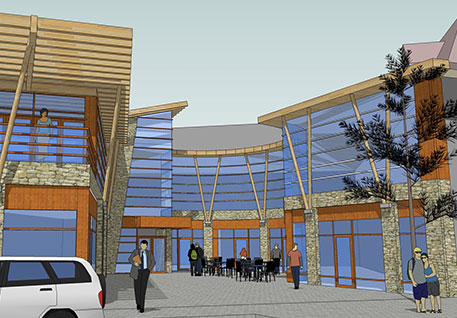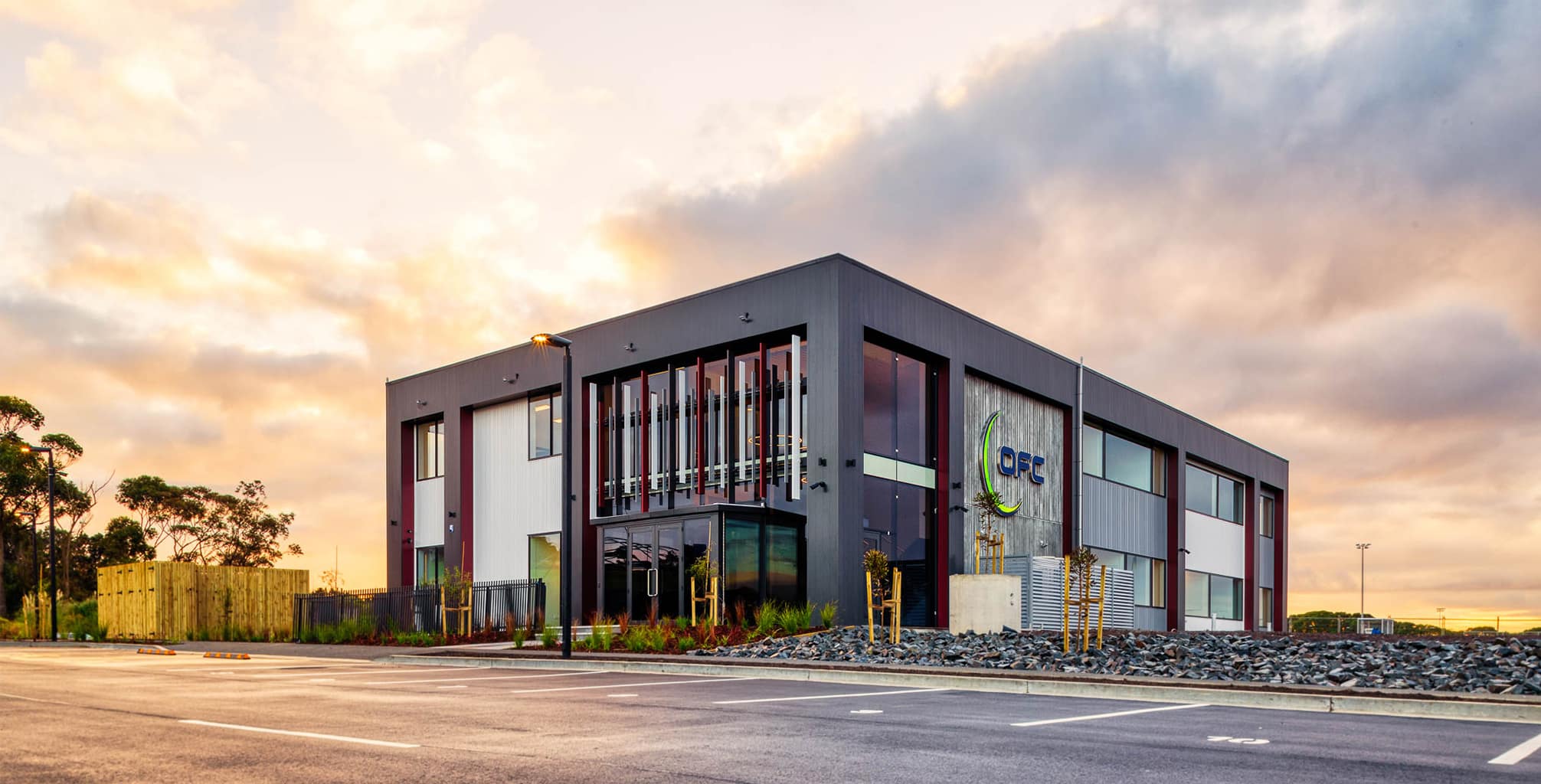Just How Commercial Architects Can Transform Your Service Area With Professional Style Services
Commercial architects play an important duty in improving business atmospheres. Their knowledge in layout can greatly boost both capability and visual appeals. By developing areas that reflect a brand's identification, they boost operational performance and staff member contentment. The impact of their job extends past simple appearance. Comprehending the subtleties of collaboration and sustainability can cause transformative outcomes. What certain aspects make these changes effective?
Recognizing the Duty of Commercial Architects
Commercial architects play an important duty in shaping service settings that are both practical and cosmetically pleasing. They focus on making areas tailored to the certain requirements of businesses, making sure that every square foot is used successfully. These professionals incorporate components such as spatial format, illumination, and products to enhance efficiency and worker well-being. By collaborating with customers, industrial architects gather understandings right into operational demands and brand identification, equating these into innovative designs.Additionally, they navigate complicated building regulations and zoning legislations, making sure compliance while maximizing style potential. Their competence prolongs to sustainability techniques, advertising power efficiency and eco-friendly products in their jobs. With their imaginative vision and technological knowledge, industrial architects not only produce appealing rooms yet likewise foster environments that advertise collaboration and growth. Ultimately, their contributions substantially influence the overall success and picture of a company.
Benefits of Expert Design Providers

Tailoring Rooms to Your Brand Identification
Tailoring areas to a brand name's identification is crucial for communicating its core values and mission. Commercial architects play an essential duty in boosting a company's aesthetic identification with thoughtful style choices. By aligning architectural components with brand name concepts, business can produce environments that resonate with customers and staff members alike.
Mirroring Brand Worths
Exactly how can a well-designed space embody a firm's core worths? Commercial architects play a vital function in forming atmospheres that resonate with a brand name's identity. By integrating elements such as color pattern, products, and formats, they develop areas that show the essence of business. For circumstances, a tech firm may select open designs and contemporary furnishings to share innovation and cooperation, while a high-end brand may choose stylish coatings and intimate spaces to stimulate exclusivity and refinement. Thoughtful design not just improves capability but additionally fosters a solid connection in between employees, clients, and the brand name. Inevitably, a well-crafted atmosphere serves as a substantial representation of a business's goal and vision, enhancing its values at every touchpoint.
Enhancing Visual Identification
What elements can efficiently boost a brand name's visual identity within a business room? Commercial architects play an essential function in incorporating layout attributes that resonate with a firm's values. Color pattern, typography, and materials can be tactically chosen to show brand name worths while ensuring visual charm. Furthermore, incorporating logo designs and brand name images right into the design can create a natural visual story. Lighting design can further improve the atmosphere, directing client assumptions and experiences (commercial architects). Layout and furnishings choices need to align with the brand's individuality, whether it's contemporary, standard, or cutting-edge. Eventually, a properly designed industrial area not just draws in customers however also reinforces brand name recognition, producing a lasting impact that fosters loyalty and engagement
Enhancing Capability and Efficiency
Enhancing capability and effectiveness in business spaces involves enhancing space application and designing process that streamline procedures. Architects focus on creating layouts that minimize thrown away area while assisting in smooth modifications in between tasks. This approach not only enhances productivity yet likewise adds to a more cohesive working atmosphere.
Maximizing Room Application
Efficient area utilization is an important factor in business design, where the design must stabilize looks with functionality (commercial architects). Architects employ various methods to maximize available square footage while guaranteeing that each area serves an unique function. By assessing process, web traffic patterns, and user demands, architects can create formats that enhance both staff member performance and client experience. Multi-functional rooms, adaptable furniture arrangements, and maximized storage remedies are crucial components in accomplishing this objective. Furthermore, integrating all-natural light and open rooms cultivates a more inviting atmosphere, more elevating the energy of the atmosphere. Eventually, reliable area use not just improves functional effectiveness however additionally contributes positively to the overall brand name photo, making it a vital factor to consider in commercial design
Structured Operations Design
How can a well-designed process change a business area into a center of efficiency? Structured operations style focuses on enhancing the physical design and functional procedures within a company environment. By tactically organizing workstations, meeting locations, and sources, architects can eliminate unneeded movement and boost collaboration. more information This thoughtful layout lessens disturbances and facilitates interaction, allowing employees to focus on their jobs more effectively. On top of that, incorporating modern technology right into the workflow can better automate procedures, reducing time invested in routine jobs. Consequently, services experience improved staff member morale and enhanced result, developing a vibrant ambience that promotes technology. Inevitably, spending in streamlined process style not just improves functionality but likewise positions a commercial room for lasting growth and success.
Cultivating Cooperation With Style
Although modern workspaces frequently prioritize private performance, the layout of industrial spaces progressively emphasizes collaboration as a vital chauffeur of technology and group cohesion. Architects play a crucial function in developing environments that cultivate interaction amongst staff members. Open up layouts, multifunctional rooms, and strategically put common locations motivate spontaneous discussions and brainstorming sessions.Incorporating elements such as movable furnishings and adaptable meeting rooms allows teams to reconfigure rooms based on their collaborative requirements. Furthermore, incorporating modern technology, like interactive whiteboards and video conferencing tools, enhances the capability to communicate properly, despite location.Natural light and biophilic design components also add to an extra inviting atmosphere, advertising comfort and wellness, which are necessary for effective teamwork. By concentrating on these facets, industrial architects can create dynamic settings that not just boost collaboration however likewise drive overall business success.
Lasting Layout Practices in Commercial Design

Instance Studies: Effective Transformations by Commercial Architects
The implementation of lasting layout practices has not only improved the method to commercial design yet has actually additionally brought about remarkable transformations in various organization rooms. One remarkable situation is the redesign of a technology business's headquarters, where architects incorporated all-natural light and environment-friendly wall surfaces, causing boosted staff member well-being and productivity. This makeover lowered power costs by 30% and improved the firm's public image.In one more circumstances, a retailer undertook a full overhaul, making use of reclaimed products and energy-efficient systems. This not only brought in eco-conscious customers yet likewise enhanced foot website traffic by 25%. A third situation entailed a company workplace that embraced an open-plan format with adaptable offices, promoting collaboration amongst groups. The architects' concentrate on producing a lively and adaptable environment substantially enhanced employee fulfillment. These instance studies exhibit how commercial architects can produce impactful visit the website spaces that align with company goals and sustainability initiatives.
Often Asked Concerns
Just How Much Do Commercial Design Solutions Usually Price?
The cost of business style solutions differs extensively, typically ranging from $100 to $250 per hour. Factors affecting rates include task intricacy, area, and the engineer's experience, making it vital for companies to acquire thorough estimates.
What Sorts Of Companies Benefit The Majority Of From Commercial Architects?
Various services, including retail, friendliness, and business offices, substantially benefit from industrial architects. These specialists boost capability, visual appeals, and brand identification, making certain spaces are enhanced for client involvement and employee productivity, inevitably cultivating company growth.
For how long Does a Commercial Layout Task Generally Take?
The timeline for a business design job generally varies from numerous weeks to numerous months. Variables affecting period consist of task intricacy, governing approvals, and collaboration among stakeholders, all of which can impact overall conclusion time.
Can I Employ an Industrial Engineer for Improvements Only?
Yes, hiring an industrial designer for restorations is viable. Lots of architects specialize in improvement jobs, offering experience in enhancing existing areas while adhering to guidelines and enhancing performance, appearances, and total value of business environment.
What Credentials Should I Look for in a Business Engineer?

Comments on “commercial architects and Their Role in Interior Planning”